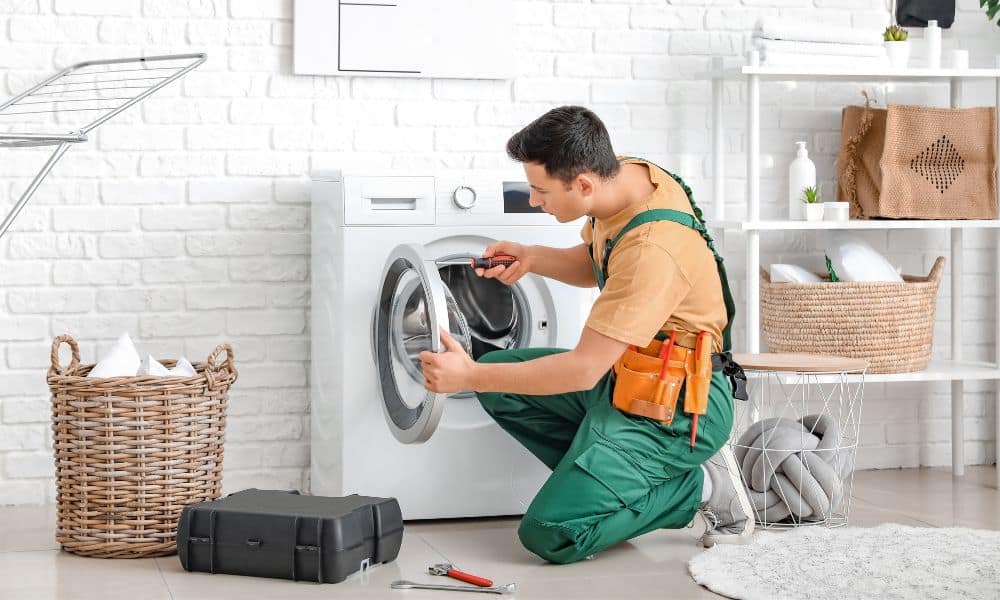Is your trusty washing machine acting up and leaving you with a pile of dirty laundry? Fret not, because understanding the first step in troubleshooting the issue is the key to a smoother laundry day. In this article, we will guide you through the initial steps of diagnosing a malfunctioning washing machine, with a focus on washing machine repair.
The First Step: Identifying the Problem
When your washing machine starts misbehaving, the very first step is to identify the problem. This might sound obvious, but pinpointing the issue correctly is crucial to finding the right solution. Here’s how to get started:
1. Observe and Listen
- Pay Close Attention
Start by observing your washing machine in action. Is it making unusual noises? Is there any visible leakage? Paying close attention to these details can provide valuable clues.
- Note the Symptoms
Take note of the symptoms your washing machine is exhibiting. Does it fail to start, make grinding sounds, leak water, or have drainage problems? Each symptom can lead you to a different set of troubleshooting steps.
2. Check for Simple Solutions
- Power Supply
Begin with the basics. Ensure that your washing machine is properly plugged in and that the power outlet is functioning. Sometimes, a loose plug or a tripped circuit breaker can be the culprit.
- Door Latch
If your washing machine refuses to start, inspect the door latch. Many modern machines have safety features that require the door to be securely closed for operation.
- Timer Knob
A malfunctioning timer knob can also prevent your washing machine from starting. If it feels loose or unresponsive, consider replacing it.
3. Examine the Obvious
- Loose Parts
Excessive noise during operation is a common issue. Check for loose parts inside the machine. Vibrations can cause screws and bolts to become undone.
- Foreign Objects
Sometimes, unusual noises might be caused by foreign objects, like coins or buttons, stuck in the drum. Ensure there are no such obstructions.
- Water Leaks
If you notice water leaks, inspect the hoses and connections. Tighten any loose hoses and look for signs of damage or cracks.
4. Analyze Drainage Problems
- Drain Filter
Poor drainage can result from a clogged drain filter. Locate the filter in your washing machine and clean it regularly to maintain smooth drainage.
- Drain Pump
The drain pump is responsible for expelling water from the machine. Check for any obstructions or damage and replace it if necessary.
- Drainage Hose
Examine the drainage hose for blockages, kinks, or damage. A blocked hose can hinder water flow and cause drainage issues.
Conclusion
Troubleshooting a malfunctioning washing machine may seem daunting, but the first step is often the most critical. By carefully observing, listening, and checking for simple solutions, you can diagnose many common issues and take steps toward washing machine repair. Remember, safety always comes first, and if you’re unsure about any aspect of the repair process, it’s wise to consult a professional technician.
Regular maintenance and timely repairs can extend your washing machine’s lifespan and keep it running smoothly for years to come.
From Rags to Riches: Inspiring Celebrity Success Stories”
Embark on a motivational journey as Celebrities Net Worth Blog scnews1 Site narrates the inspiring stories of celebrities who started from humble beginnings and soared to unimaginable wealth. Discover the resilience and determination that paved the way for their financial success.
FAQs
Q1: What should I do if my washing machine is making loud noises during the cycle?
Start by checking for loose parts inside the machine and foreign objects in the drum. Tighten any loose components and remove any obstructions.
Q2: Why is my washing machine leaking water?
Water leaks can occur due to loose hoses, damaged connections, or a faulty door seal. Inspect these areas for issues and address them accordingly.
Q3: My washing machine won’t start. What could be the problem?
Begin by ensuring that the machine is properly plugged in and the power outlet is functional. Check the door latch and the timer knob for any issues.
Q4: How often should I clean the drain filter in my washing machine?
Cleaning the drain filter every three to six months is a good practice to prevent drainage problems and maintain the machine’s performance.
Q5: Is it safe to attempt washing machine repair on my own, or should I seek professional help?
While some simple issues can be resolved by DIY enthusiasts, safety should be a priority. If you’re unsure, it’s advisable to consult a professional technician for repairs.
